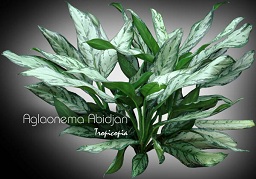Table of contents
Chinese Evergreen

Latin Name: Aglaonema ‘Abidjan’
Category: Aglaonema
Family: Araceae
Origin: Hybrid
Climate: Tropical
Growing Zones: 11
Care Instructions
The Chinese Evergreen (Aglaonema ‘Abidjan’) is a tropical plant that originates from Hybrid. This aglaonema plant belongs to the Araceae family and is well-suited for growing in USDA zones 11.
Complete Care Guide for Chinese Evergreen (Aglaonema ‘Abidjan’)
Watering Requirements
The Chinese Evergreen, or Aglaonema ‘Abidjan’, thrives in moderate moisture levels. It is essential to allow the top inch of soil to dry out between waterings. Overwatering can lead to root rot, a common issue with this plant. During the growing season (spring and summer), water the plant more frequently, approximately once a week, ensuring that excess water drains out of the pot. In the fall and winter months, reduce watering to every two weeks, as the plant’s growth slows down. Always check the soil moisture before watering; if it feels damp, hold off on watering until it dries out.
Light Conditions
Chinese Evergreens prefer bright, indirect light but can tolerate low-light conditions, making them ideal for indoor environments. Direct sunlight can scorch their leaves, so it’s best to place them near a window with filtered light or in a well-lit room. If the plant is not receiving enough light, you may notice slower growth and less vibrant leaf coloration. Conversely, if the leaves start to yellow or develop brown tips, it may be a sign of too much direct sunlight. Rotate the plant occasionally to ensure even growth and exposure to light.
Soil Preferences
Aglaonema ‘Abidjan’ thrives in well-draining potting soil that retains some moisture without becoming waterlogged. A mix of standard potting soil with perlite or orchid bark can provide the ideal balance of drainage and moisture retention. This plant benefits from a slightly acidic to neutral pH (around 6.0 to 7.0). Fertilization is recommended during the growing season; use a balanced, water-soluble fertilizer diluted to half strength every 4-6 weeks. Avoid fertilizing in the fall and winter when the plant’s growth slows down.
Pests and Diseases
Chinese Evergreens are generally resilient but can be susceptible to pests such as spider mites, aphids, and mealybugs. Regularly inspect the undersides of leaves and the stems for any signs of infestation. If you notice pests, treat the plant with insecticidal soap or neem oil, ensuring to cover all surfaces of the plant. Additionally, keep an eye out for signs of fungal diseases, which can occur in overly moist conditions. Yellowing leaves or a mushy stem may indicate root rot, which can be remedied by allowing the soil to dry out and repotting the plant in fresh soil if necessary.
Special Care Tips
To maintain the health and beauty of your Chinese Evergreen, consider the following special care tips: First, wipe the leaves with a damp cloth regularly to remove dust and improve photosynthesis. This also helps prevent pest infestations. Second, avoid placing the plant in drafty areas or near heating vents, as sudden temperature changes can stress the plant. Lastly, if you notice the plant becoming leggy or sparse, consider pruning back the stems to encourage bushier growth. Propagation is also possible through stem cuttings, which can be rooted in water or soil, allowing you to expand your collection or share with friends.








